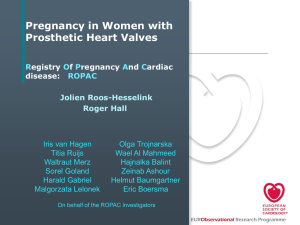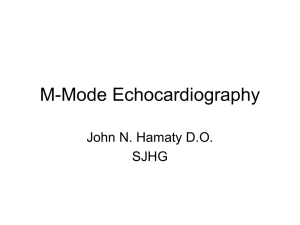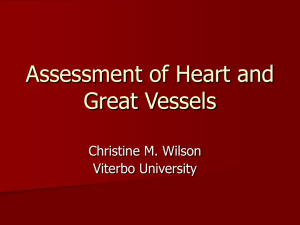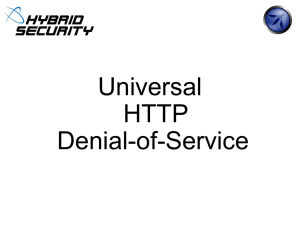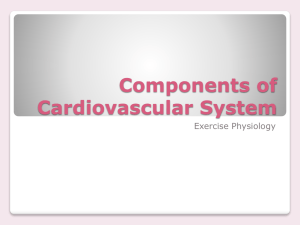Antithrombotic and Thrombolytic Therapy for Valvular Disease
advertisement
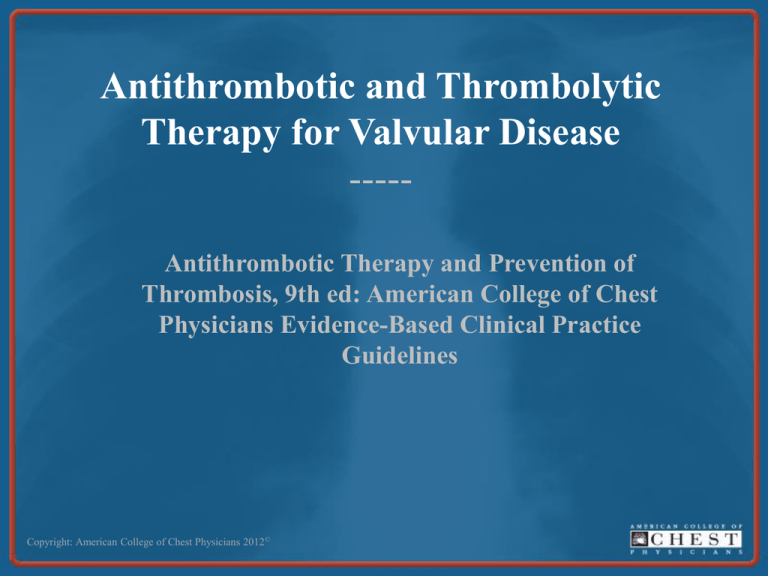
Antithrombotic and Thrombolytic Therapy for Valvular Disease ----Antithrombotic Therapy and Prevention of Thrombosis, 9th ed: American College of Chest Physicians Evidence-Based Clinical Practice Guidelines Copyright: American College of Chest Physicians 2012© Patients With Rheumatic Mitral Valve Disease In patients with rheumatic mitral valve disease and normal sinus rhythm with a left atrial diameter < 55 mm we suggest not using antiplatelet or VKA therapy (Grade 2C). Patients With Rheumatic Mitral Valve Disease In patients with rheumatic mitral valve disease and normal sinus rhythm with a left atrial diameter > 55 mm, we suggest VKA therapy (target INR, 2.5; range, 2.0-3.0) over no VKA therapy or antiplatelet (Grade 2C). Patients With Rheumatic Mitral Valve Disease For patients with rheumatic mitral valve disease complicated by the presence of left atrial thrombus, we recommend VKA therapy (target INR, 2.5; range, 2.0-3.0) over no VKA therapy (Grade 1A). Patients With Rheumatic Mitral Valve Disease For patients with rheumatic mitral valve disease complicated singly or in combination by the presence of atrial fibrillation or previous systemic embolism, we recommend VKA therapy (target INR, 2.5; range, 2.0-3.0) over no VKA therapy (Grade 1A). Patients With Rheumatic Mitral Valve Disease Undergoing Percutaneous Mitral Balloon Valvotomy (PMBV) For patients being considered for percutaneous mitral balloon valvotomy (PMBV) with preprocedural transesophageal echocardiography (TEE) showing left atrial thrombus, we recommend postponement of PMBV and that VKA therapy (target INR, 3.0; range, 2.5-3.5) be administered until thrombus resolution is documented by repeat TEE over no VKA therapy (Grade 1A). Patients With Rheumatic Mitral Valve Disease Undergoing Percutaneous Mitral Balloon Valvotomy (PMBV) For patients being considered for PMBV with preprocedural TEE showing left atrial thrombus, if the left atrial thrombus does not resolve with VKA therapy, we recommend that PMBV not be performed (Grade 1A). Patients With PFO and Atrial Septal Aneurysm In patients with asymptomatic patent foramen ovale (PFO) or atrial septal aneurysm, we suggest against antithrombotic therapy (Grade 2C). Patients With PFO and Atrial Septal Aneurysm In patients with cryptogenic stroke and PFO or atrial septal aneurysm, we recommend aspirin (50-100 mg/d) over no aspirin (Grade 1A). Patients With PFO and Atrial Septal Aneurysm In patients with cryptogenic stroke and PFO or atrial septal aneurysm, who experience recurrent events despite aspirin therapy, we suggest treatment with VKA therapy (target INR, 2.5; range, 2.0-3.0) and consideration of device closure over aspirin therapy (Grade 2C). Patients With PFO and Atrial Septal Aneurysm In patients with cryptogenic stroke and PFO, with evidence of DVT, we recommend VKA therapy for 3 months (target INR, 2.5; range, 2.0-3.0) (Grade 1A) and consideration of device closure over no VKA therapy or aspirin therapy (Grade 2C). Role of Anticoagulants and Antiplatelet Agents in Patients With Native Valve Endocarditis In patients with infective endocarditis (IE), we recommend against routine anticoagulant therapy, unless a separate indication exists (Grade 1C). Role of Anticoagulants and Antiplatelet Agents in Patients With Native Valve Endocarditis In patients with IE, we recommend against routine antiplatelet therapy, unless a separate indication exists (Grade 1B). Role of Anticoagulants in Patients With Prosthetic Valve Endocarditis In patients on VKA for a prosthetic valve who develop IE, we suggest VKA be discontinued at the time of initial presentation until it is clear that invasive procedures will not be required and the patient has stabilized without signs of CNS involvement. When the patient is deemed stable without contraindications or neurologic complications, we suggest reinstitution of VKA therapy (Grade 2C). Patients With Nonbacterial Thrombotic Endocarditis In patients with nonbacterial thrombotic endocarditis and systemic or pulmonary emboli, we suggest treatment with fulldose IV UFH or SC LMWH over no anticoagulation (Grade 2C). Antithrombotic Therapy in the First 3 Months After Surgery In patients with aortic bioprosthetic valves, who are in sinus rhythm and have no other indication for VKA therapy, we suggest aspirin (50-100 mg/d) over VKA therapy in the first 3 months (Grade 2C). Antithrombotic Therapy in the First 3 Months After Surgery In patients with transcatheter aortic bioprosthetic valves, we suggest aspirin (50-100 mg/d) plus clopidogrel (75 mg/d) over VKA therapy and over no antiplatelet therapy in the first 3 months (Grade 2C). Antithrombotic Therapy in the First 3 Months After Surgery In patients with a bioprosthetic valve in the mitral position, we suggest VKA therapy (target INR, 2.5; range, 2.0-3.0) over no VKA therapy for the first 3 months after valve insertion (Grade 2C). Long-term Antithrombotic Therapy for Patients With Bioprosthetic Valves In patients with bioprosthetic valves in normal sinus rhythm, we suggest aspirin therapy over no aspirin therapy after 3 months postoperative (Grade 2C). Early Postoperative Bridging to Intermediate/ Long-term Therapy in Mechanical Valves (Postoperative Day 0 to 5) In patients with mechanical heart valves, we suggest bridging with unfractionated heparin (UFH, prophylactic dose) or LMWH (prophylactic or therapeutic dose) over IV therapeutic UFH until stable on VKA therapy (Grade 2C). Long-term Antithrombotic Therapy for Patients With Mechanical Valves In patients with mechanical heart valves, we recommend VKA therapy over no VKA therapy for long-term management (Grade 1B). Intensity of VKA Therapy for Patients With Mechanical Aortic Valve Prostheses In patients with a mechanical aortic valve, we suggest VKA therapy with a target of 2.5 (range 2.0-3.0) over lower targets (Grade 2C). Intensity of VKA Therapy for Patients With Mechanical Aortic Valve Prostheses In patients with a mechanical aortic valve, we recommend VKA therapy with a target of 2.5 (range 2.0-3.0) over higher targets (Grade 1B). Intensity of VKA Therapy for Patients With Mechanical Mitral Valve Prostheses In patients with a mechanical mitral valve, we suggest VKA therapy with a target of 3.0 (range 2.5-3.5) over lower INR targets (Grade 2C). Intensity of VKA Therapy in Patients With Double Mechanical Valve or With Additional Risk Factors In patients with mechanical heart valves in both the aortic and mitral position, we suggest target INR 3.0 (range 2.5-3.5) over target INR 2.5 (range 2.0-3.0) (Grade 2C). Antiplaelet Agent in Addition to VKA Therapy for Patients With Mechanical Aortic or Mitral Valve Prostheses In patients with a mechanical mitral or aortic valve at low risk of bleeding, we suggest adding over not adding an antiplatelet agent such as low-dose aspirin (50-100 mg/d) to the VKA therapy (Grade 1B). Remarks: Caution should be used in patients at increased bleeding risk, such as history of GI bleeding. Antiplatelet Agent Therapy Instead of VKA Therapy For patients with mechanical aortic or mitral valves we recommend VKA over antiplatelet agents (Grade 1B). Antithrombotic Therapy After Mitral Valve Repair In patients undergoing mitral valve repair with a prosthetic band in normal sinus rhythm, we suggest the use of antiplatelet therapy for the first 3 months over VKA therapy (Grade 2C). Patients Undergoing Aortic Valve Repair In patients undergoing aortic valve repair, we suggest aspirin at 50 to 100 mg/d over VKA therapy (Grade 2C). Patients With Right-Sided Prosthetic Valve Thrombosis For patients with right-sided prosthetic valve thrombosis (PVT), in the absence of contraindications we suggest administration of fibrinolytic therapy over surgical intervention (Grade 2C). Patients With Left-Sided Prosthetic Valve Thrombosis For patients with left-sided PVT and large thrombus area (≥ 0.8 cm2), we suggest early surgery over fibrinolytic therapy (Grade 2C). If contraindications to surgery exist, we suggest the use of fibrinolytic therapy (Grade 2C). Patients With Left-Sided Prosthetic Valve Thrombosis For patients with left-sided PVT and small thrombus area (< 0.8 cm2), we suggest administration of fibrinolytic therapy over surgery. For very small, nonobstructive thrombus we suggest IV UFH accompanied by serial Doppler echocardiography to document thrombus resolution or improvement over other alternatives (Grade 2C). Endorsing Organizations This guideline has received the endorsement of the following organizations: • • • • • American Association for Clinical Chemistry American College of Clinical Pharmacy American Society of Health-System Pharmacists American Society of Hematology International Society of Thrombosis and Hemostasis Acknowledgement of Support The ACCP appreciates the support of the following organizations for some part of the guideline development process: Bayer Schering Pharma AG National Heart, Lung, and Blood Institute (Grant No.R13 HL104758) With educational grants from Bristol-Myers Squibb and Pfizer, Inc. Canyon Pharmaceuticals, and sanofi-aventis U.S. Although these organizations supported some portion of the development of the guidelines, they did not participate in any manner with the scope, panel selection, evidence review, development, manuscript writing, recommendation drafting or grading, voting, or review. Supporters did not see the guidelines until they were published.
